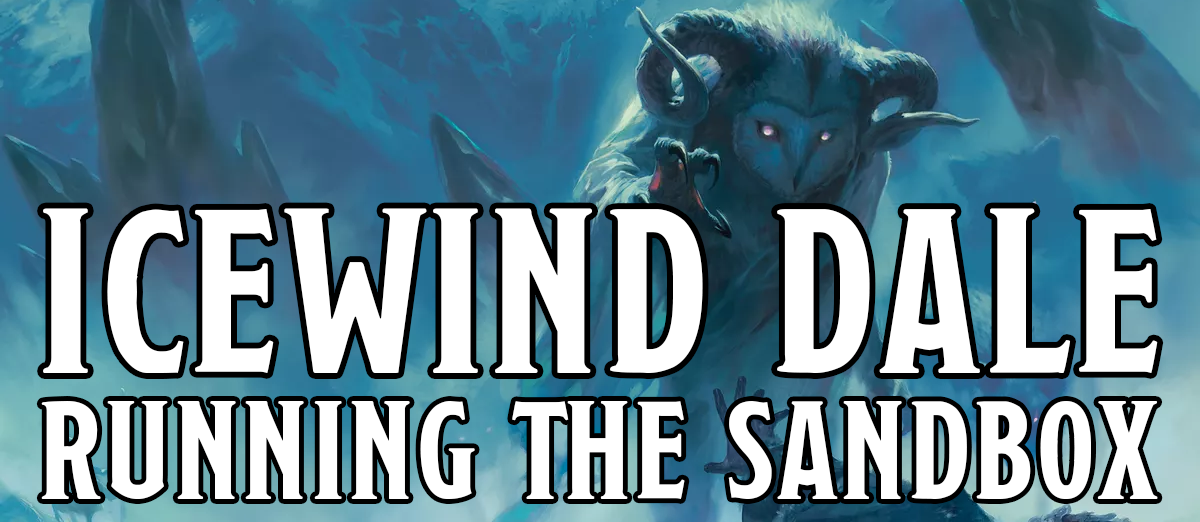I'll focus on what you might do going forward (2-4), rather than on what's already water under the bridge (1).
2) The adventure presented is a sandbox with many quests not linking directly to the main story. And when the main story is that sub freezing temperatures are destroying an entire region, cloaked in perpetual night, in the talons of an evil goddess, it's hard for my players to want to focus on anything that isn't connected to that.
Almost every side quest should dovetail back into either the main quest or into one of the PC's story beats, or even both. I haven't run RotFM, but when I ran Tomb of Annihilation, I read through the whole book and looked for weak points in the narrative. Then I devised ways to bolster these "side quests" by either tying them to the main story or to individual PC story beats.
For example, there was a Dance of the Seven Winds ritual wherein the aarakocra bestowed the PCs with magical flight. It just happens, there's no story around it.
Well, I had an aarakocra PC from that settlement.
And I also noticed that the villains (Acererak and night hags) were poorly foreshadowed.
And finally I noticed that the players were playing their PCs a little close to the chest in terms of revealing their flaws, ideals, bonds, and such.
So I crafted a story around the Dance of the Seven Winds ritual. The aarakocra who knew the ritual was the mentor of the PC aarakocra, but was suffering from madness induced by nightmares... which were caused by one of the night hags. PCs broke the nightmare effect, restoring the NPC's sanity so he could perform the ritual. Then we played out the ritual, wherein I had each player individual "face" a scene against multiple monsters in the dream mists. Each monster embodied the flaw of another PC in the group, and any damage dealt to a "monster" dealt a corresponding amount of psychic damage to the PC in question. Once they got it, the paladin PC confronted a dream version of Acererak who used
power word kill on the paladin, ending the ritual. The PCs got their flight magic, and they also learned that Acererak likely had the ability to outright kill anyone with 100 hp or less, which informed their tactics in the final showdown.
In that example, I was hitting on (a) an individual PC story beat, (b) dovetailing the side quest to the main quest, and (c) foreshadowing the villains.
Not every side quest is going to hit on so many things relevant to the players, but the more that you can hit on with a side quest, the better. At least when it comes to these sorts of hardcover modules.
3) There are around a dozen towns, settlements, encampments, which are laid out in scant detail. The book might describe 2-3 locations and a handful of villagers in each town. This cursory detail makes it hard to bring the world to life and - as a result - harder for the players to feel a part of the world and their problems.
I added tons of detail to setting locations in Tomb of Annihilation. My players are very detail-oriented, plus we were exploring the non-human races (grung, goblins, lizardfolk) more than the module does.
If you don't have the time or wherewithal to fill in the details yourself, I'm sure DMs Guild has people who are elaborating on Ten Towns. Here's
one I found with a quick search. I'm sure others can direct you to additional resources.
4) This lack of detail, unconnected quests, and perceived high difficulty carry over to the way the players handle their characters. There is little roleplay or character development (though they've really enjoyed this part of the game in past campaigns - homebrew and Curse of Strahd.) The mini-quests don't keep a consistent story arc going on, and the early character death made players not especially care about developing their characters' personalities.
I've addressed detail & connecting quests above. You also need to regain the trust of your players. If there wasn't, during session zero, a clear conversation and complete buy-in to "this is a deadly game, and you could die at any moment", then they probably feel a bit cheated and/or scarred after the first session deaths.
My suggestion is to dial back the pacing for a session, have genuinely helpful NPCs take concrete action to aid the PCs against a threat (manpower, healing potions, a spellbook, critical advice, a secret route, whatever), and focus on the story beats for whatever players have provided you with such that you can riff with. Dial down the deadly, slow down the pacing for a spell, dial up the player story, dial up the friendly NPCs. Listen and watch how the players react to this. That's how a DM rebuilds trust.
EDIT: Also, just because a primary character dies early, doesn't mean their story arc dies completely. You see this happen in fiction all the time. In D&D it can take the form of family members of the deceased making an appearance, the DM framing a bit of downtime at the tavern or campfire "your conversation turns to the deceased Thraindor and what you each remember most about him...", an unexpected connection being revealed between the dead character and a living PC, etc.

